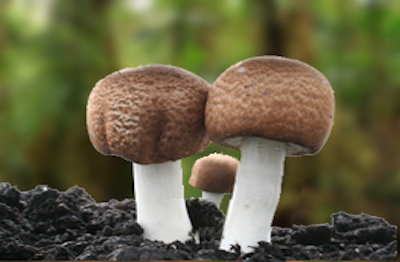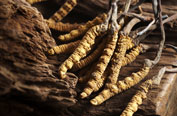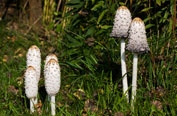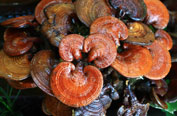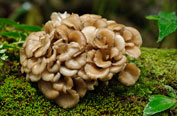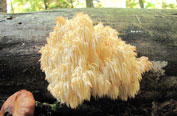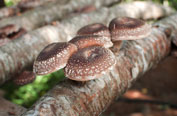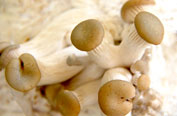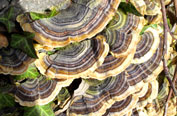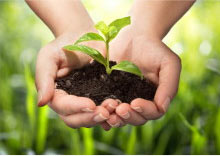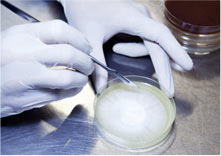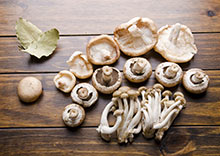
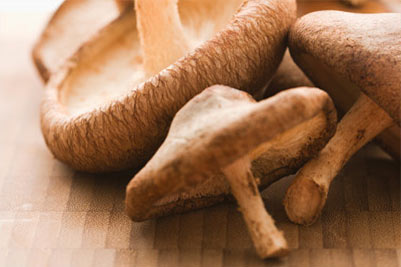
Mycorrhizal fungi species
Ectomycorrhiza
Ectomycorrhizas are the most common species in the woodlands of Central Europe. These fungi form a compact sheath of mycelium filaments on the surface of the roots. The mycelium hyphae of ectomycorrhiza don´t penetrate the root cells, but develop a network in extracellular space. Popular partners of ectomycorrhiza species are, amongst others, birch, beech, pines, willows, rosaceous plants.
Endomycorrhiza
These are mycorrhizas whose hyphae enter into the plant cells, producing structures that are either balloon-like (vesicles) or dichotomously-branching invaginations (arbuscules). The fungal hyphae do not in fact penetrate the protoplast (i.e. the interior of the cell), but invaginate the cell membrane. The structure of the arbuscules greatly increases the contact surface area between the hypha and the cell cytoplasm to facilitate the transfer of nutrients between them. A special form or endomycorrhiza is the arbuscular mycorrhiza. Popular partners are herbaceous plant species and orchids and also some tree species.
Trichoderma
Trichoderma is a genus of sac fungi. Popular partners are most notably conifers. These fungi have a very positive effect on the uptake of mineral nutrients from the soil. In fact this species may provide nutrients from one plant to another to stabilize weak plants.
Find out how to colonize the root system of your plants with mycorrhizal fungi:
Bring together what belongs together! From now on it is possible to colonize the roots of your plants and the surrounding soil with mycorrhizal fungi in an easy, safe and 100 % natural way.
Mycorrhiza application is easy and requires no special equipment. It can be sprinkled onto roots during transplanting, worked into seed beds, blended into potting soil, or applied as a root dip gel. MRCA provides the adequate solution for every application! Our mycorrhiza products are designed for any application, from home gardener to professional landscape designer, as well as for agricultural and forestry applications.
Mycorrhiza products consist of specially selected mycorrhizal spores. When these spores get into contact with the roots of a plant, they germinate. Find out more about the technique how to reestablish mycorrhiza in existing or newly-started planting pots, beds and whole farm fields; even with old-grown trees! Typically, the cost is low per plant.
Mycorrhiza Granular
Mycorrhiza Granular inoculum consists of 10 carefully selected species of endomycorrhiza, ectomycorrhiza and trichoderma fungal species. This product is suitable for directly mixing with soil and substrates for pots and beds.
Mycorrhiza Root Dip Gel
The Root Dip Gel is composed of 13 specially selected mycorrhizal fungi. You will get a powder to mix with water, which will form a slurry or thin gel. Mycorrhiza Root Dip Gel consists of 2.8m spores of endomycorrhizal and ectomycorrhizal fungi per gram.
Mycorrhiza Soluble
Can be added directly when watering.
It is composed of 13 specially selected mycorrhizal fungi, 2 trichodermal and 17 bacterial species. Mycorrhiza Soluble consists of 1.1m spores of endomycorrhiza and ectomycorrhiza per gram as well as trichodermal fungi and approx. 15m species of other soil organisms.
Mycorrhiza Tabs
Mycorrhiza Tabs include spores which colonize plant roots and the surrounding soil. Mycorrhiza Tabs consist of about 10m spores of endo- and ectomycorrhizal fungi per gram as well as 5 % of Ascophyllum nodosum (knotted kelp extract) to boost the germination of spores.
Mycorrhiza Seed Inoculant
The mycorrhizal spores contained in the inoculant will colonize germinating seeds and the surrounding soil or substrate. Mycorrhiza Seed Inoculant can be applied directly when inserting the seeds into the soil.


